User Research.
Bridging distance
In a world where physical distances often separate us, the need for togetherness becomes a crucial aspect of human interaction. In the realm of modern communication, while communication tools enable us to gather, they struggle to truly bring us together. The essence of our interactions and the richness of our conversations get entangled in the technical constraints of these tools, diminishing the authenticity of our connections and the true sense of togetherness we long for. My project aims to speculate alternatives for experiencing togetherness while connecting online with loved ones over long distances. It addresses the moments of disconnection in virtual interactions and proposes ways to create more experientially enriching and personal communication experiences.
Project Information
This thesis investigates ways to enhance online connections with loved ones, focusing on moments of disconnection despite regular contact. Drawing from personal and shared experiences, I identified key pain points in virtual interactions. Utilizing a user-centered design approach, the research aims to develop speculative alternatives that foster deeper presence and engagement. By analyzing how people interact with current communication devices and proposing alternative designs, the project seeks to make remote interactions more intimate and meaningful. The study delves into the intricate relationships people have with their devices, exploring how different mediums influence our interactions and experiences. Key friction points that hinder connection during virtual calls were identified, leading to new perspectives and solutions for more fulfilling online communication.
Methods
The research utilized a user-centered design approach, beginning with in-depth interviews and observational research to gain a comprehensive understanding of the disconnection experienced during online interactions. By closely engaging with users, the study identified key friction points—specific aspects of virtual communication that hinder a sense of connection and satisfaction. To address these issues, a range of design interventions were developed. Low-fidelity prototypes were then created to explore these ideas in practical, tangible forms, allowing for user testing and feedback. This iterative design process was essential, as it involved multiple rounds of refinement based on user insights, ensuring that the final explorations effectively enhanced user engagement and presence.
Result
The research identified several key moments of disconnection and developed design solutions to enhance online interactions with loved ones:
- Detaching Calls from Current Devices: A tangible artifact was created to provide a distraction-free medium for calls, helping users stay focused and fully engaged. This seeks to allow users to physically set their availability and preferred modes of communication, using muscle memory to ensure confidence in their settings.
- Always-on Connection: A virtual space was designed to simulate a shared living environment, allowing for spontaneous and intimate interactions. This setup seeks to eliminate the need for scheduling, enabling users to connect naturally, just like they would in real life.
- Spontaneous Communication: A system was developed that displays real-time availability, encouraging more natural and unplanned conversations. This feature seeks to provide clear indicators of when users are available, fostering spontaneous and meaningful interactions.
- Conversational Flow: A unified platform was created to integrate media sharing, messaging, and calling. This seamless experience seeks to minimize disruptions and digital overload, helping people stay engaged and focused during conversations.
- Mobility: A flexible system with detachable panels was designed for easy communication throughout different spaces. This seeks to allow users to move freely during calls and customize their viewing angles for maximum convenience.
- Experiential Delights: Explorations were developed that seek to allow people to interact with asynchronous messages in a contextual, spatial environment, engaging in shared activities online and enhancing in-call experiences through interactive elements for a more dynamic communication experience.
Each of these alternatives are crafted to address specific friction points identified during the research, ultimately aiming to foster a deeper sense of connection and presence in online interactions.
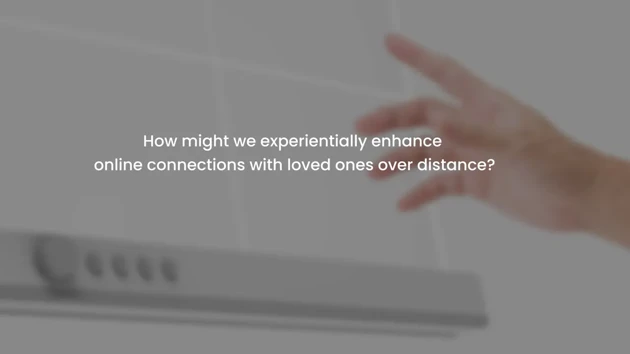
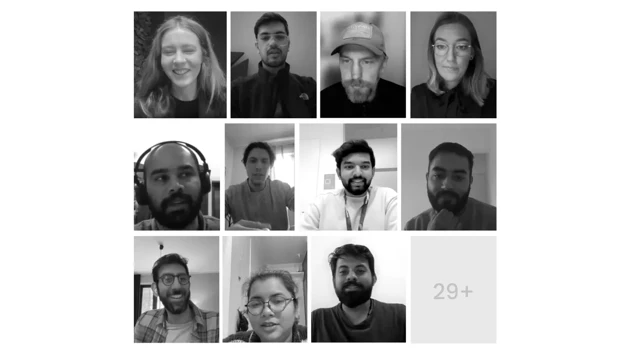
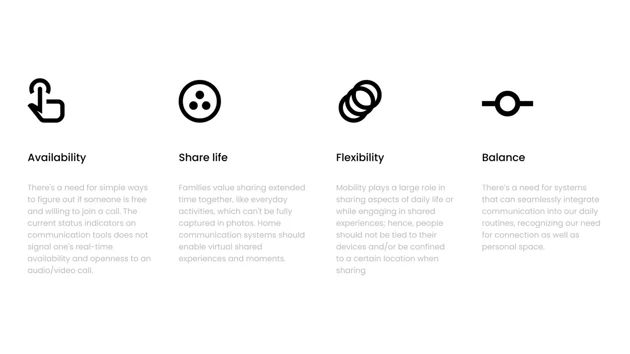
Identified User Needs.

Ideation Workshop.
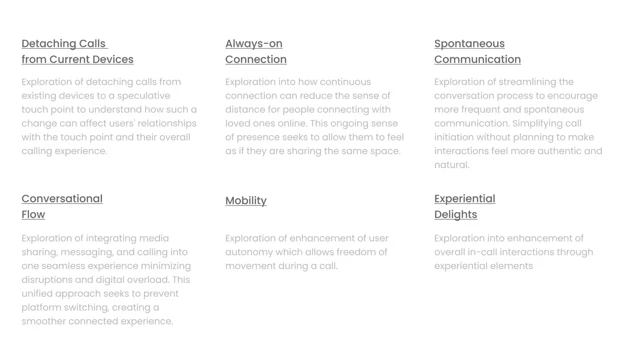
Identified moments of disconnection.
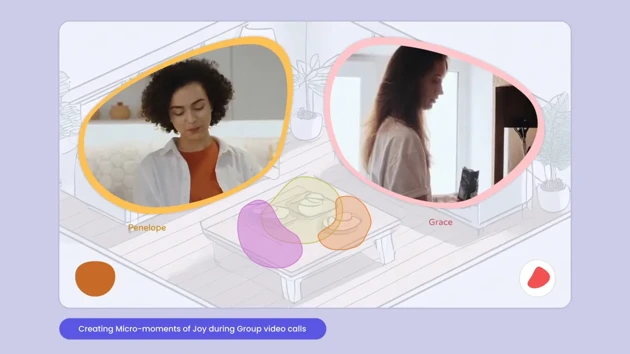
Enhancing group video call experience.
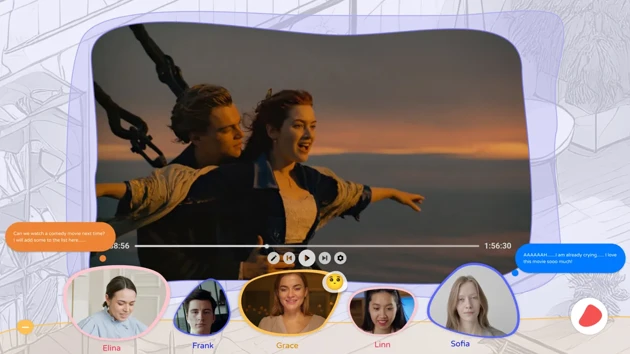
Engaging in shared experiences online.
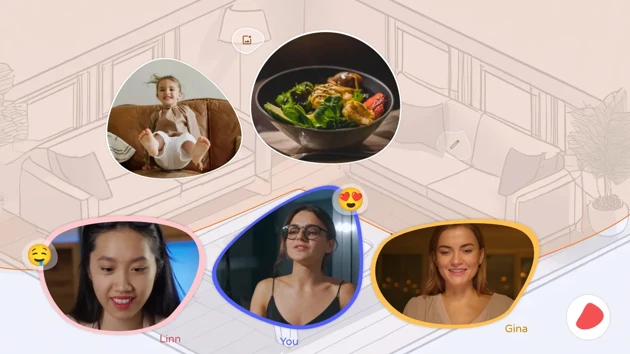
Unified alternative that combines media sharing, messaging and calling all at one place.
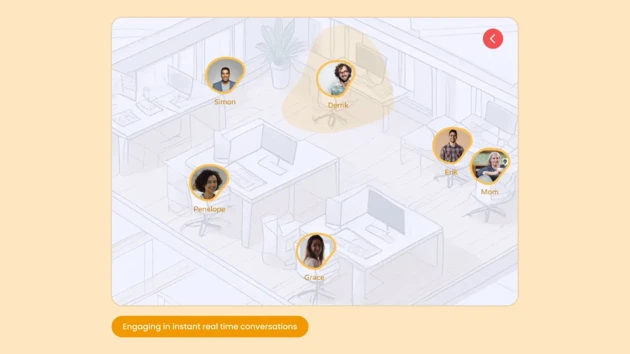
Engaging in live communication.
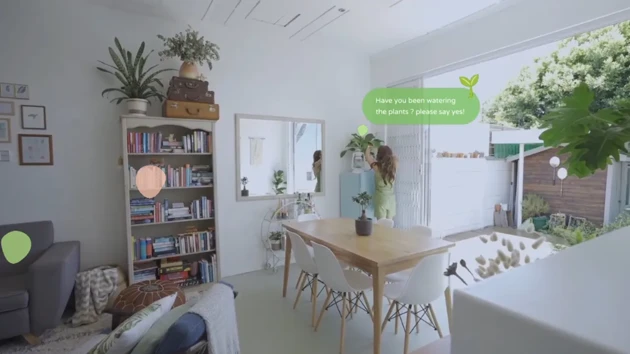
Engaging with asynchronous messages in a spatial environment.












